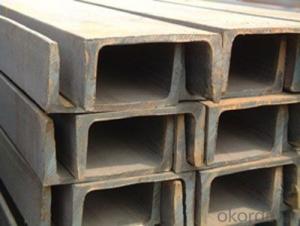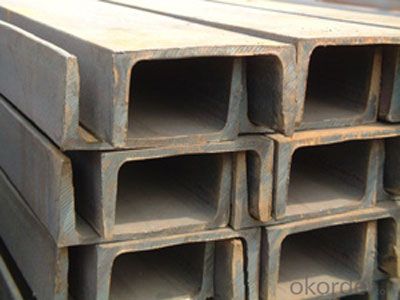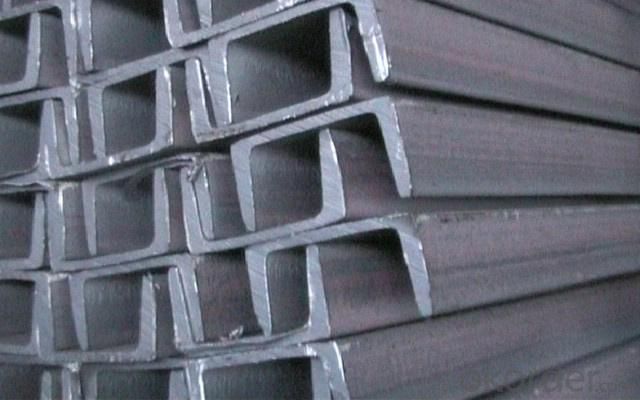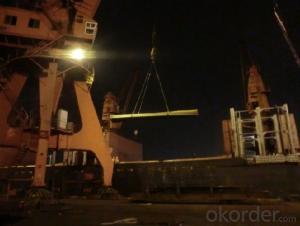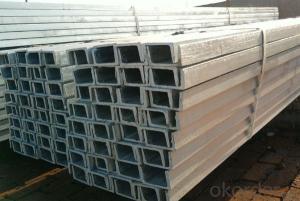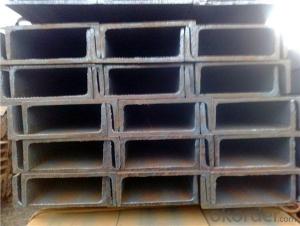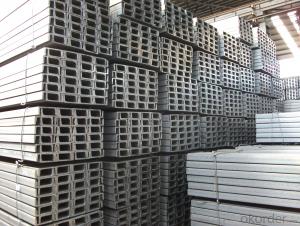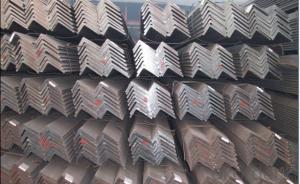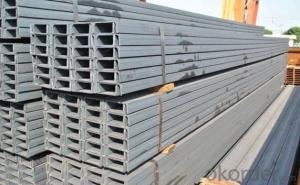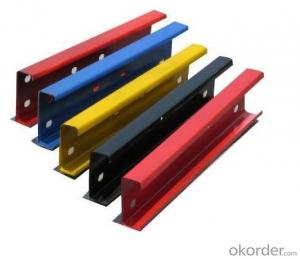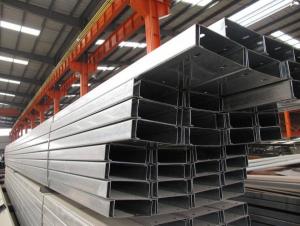Steel U-Channel (SS400, ST37-2, A36, S235JRG1, Q235, Q345)
- Loading Port:
- Tianjin
- Payment Terms:
- TT or LC
- Min Order Qty:
- 3000 PCS
- Supply Capability:
- 12000 PCS/month
OKorder Service Pledge
OKorder Financial Service
You Might Also Like
OKorder is offering high quality Steel U-Channels (SS400, ST37-2, A36, S235JRG1, Q235, Q345) at great prices with worldwide shipping. Our supplier is a world-class manufacturer of steel, with our products utilized the world over. OKorder annually supplies products to European, North American and Asian markets. We provide quotations within 24 hours of receiving an inquiry and guarantee competitive prices.
Product Applications:
Steel U-Channels (SS400, ST37-2, A36, S235JRG1, Q235, Q345) are ideal for structural applications and general fabricating, as well as transportation and engineering.
Product Advantages:
OKorder's Steel Channels are durable, strong, and resists corrosion.
Main Product Features:
· Premium quality
· Prompt delivery & seaworthy packing (7-10 days after receiving deposit)
· Corrosion resistance
· Can be recycled and reused
· Lighter than concrete
· Professional Service
· Competitive pricing
Product Specifications:
Grade: SS400, ST37-2, A36, S235JRG1, Q235, Q345
Height: 90 – 400mm
Wall Thickness: 6.0 – 16.0mm
Length: 6m – 12m, as per customer request
FAQ:
Q1: Why buy Materials & Equipment from OKorder.com?
A1: All products offered byOKorder.com are carefully selected from China's most reliable manufacturing enterprises. Through its ISO certifications, OKorder.com adheres to the highest standards and a commitment to supply chain safety and customer satisfaction.
Q2: How do we guarantee the quality of our products?
A2: We have established an advanced quality management system which conducts strict quality tests at every step, from raw materials to the final product. At the same time, we provide extensive follow-up service assurances as required.
Q3: How soon can we receive the product after purchase?
A3: Within three days of placing an order, we will begin production. The specific shipping date is dependent upon international and government factors, but is typically 7 to 10 workdays.
Q4: What makes stainless steel stainless?
A4: Stainless steel must contain at least 10.5 % chromium. It is this element that reacts with the oxygen in the air to form a complex chrome-oxide surface layer that is invisible but strong enough to prevent further oxygen from "staining" (rusting) the surface. Higher levels of chromium and the addition of other alloying elements such as nickel and molybdenum enhance this surface layer and improve the corrosion resistance of the stainless material.
Q5: Can stainless steel rust?
A5: Stainless does not "rust" as you think of regular steel rusting with a red oxide on the surface that flakes off. If you see red rust it is probably due to some iron particles that have contaminated the surface of the stainless steel and it is these iron particles that are rusting. Look at the source of the rusting and see if you can remove it from the surface.
Images:
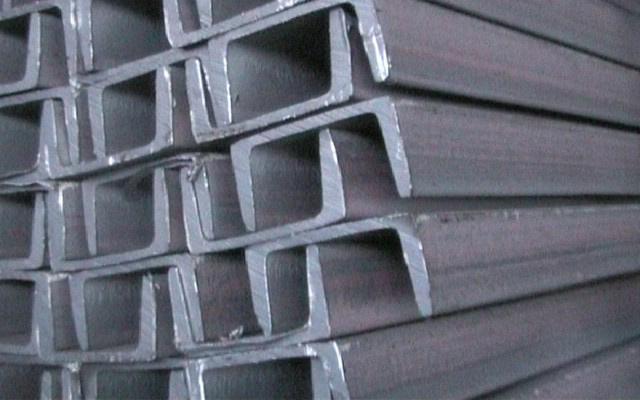
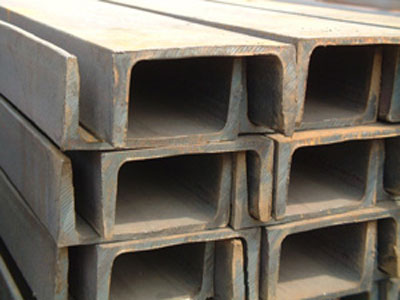
- Q: What are the methods and the price of building the floor?
- Channel or I-beam construction. Under normal circumstances, the use of channel steel on the line, but with the bending strength of I-beam will be higher, of course, the cost will be higher, but also occupy more space I-beam height. The advantage of channel steel construction is that it is quick to use. It does not need to wait. The disadvantage is that the channel made attic, when people walk in the above, there will be a certain shaking sound, the smaller channel specifications, the greater the shaking. The adoption of channel steel is a recommended practice.
- Q: What are the different connection methods for steel channels?
- Different connection methods are available for steel channels, depending on the desired structural integrity and application. Some commonly used methods include: 1. Welding: Steel channels can be connected by melting their edges and joining them together using heat. This method requires skilled welders and can be time-consuming, but it provides a strong and durable connection. 2. Bolting: Another common method is using bolts and nuts to secure the steel channels. This method is relatively quick and allows for disassembly if needed. However, it may not offer the same level of strength as welding. 3. Riveting: Heavy-duty applications often use riveting, where metal pins or rivets are used to join the steel channels. This method provides a strong and permanent connection but requires special tools and skilled labor. 4. Adhesive bonding: High-strength adhesives or epoxy can be used to bond steel channels together. This method offers a strong and flexible connection but may not be suitable for all applications and requires proper surface preparation and curing time. 5. Mechanical connectors: Mechanical connectors like beam hangers or brackets can also be employed to connect steel channels. These connectors provide a quick and easy method but may not offer the same level of structural integrity as other methods. When selecting a connection method for steel channels, it is crucial to consider factors such as load-bearing capacity, structural design requirements, and ease of installation. Consulting with a structural engineer or construction professional can help ensure the appropriate method is chosen for a specific project.
- Q: In the construction engineering construction site, such as channel material piled reinforced why mat wood, directly on the concrete floor (ground) on the surface is not?
- 1. Prevent rust.2. Keep the component clean and non clay. Otherwise, the rain will take enough time to clean the components.3. Convenient transportation. When the component is high, it is convenient to wear a steel rope to bind, a bundle of steel bars, the transportation efficiency is high; you put the steel bar directly on the ground, and later inconvenient to transport by crane, can only move out one by one.
- Q: Can steel channels be used as lintels?
- Indeed, lintels can be constructed using steel channels. Lintels are essential components that provide support for the load situated above an aperture, be it a door or window. Steel channels, also referred to as C-channels or U-channels, are frequently utilized as lintels due to their robustness and longevity. They find extensive application in construction ventures that necessitate the support of substantial burdens. Steel channels are engineered to endure bending and torsional forces, rendering them ideal for lintel purposes. Furthermore, steel channels can be conveniently customized and fabricated to suit specific opening dimensions and load prerequisites. Moreover, they exhibit resistance to fire, corrosion, and termite destruction, which establishes them as a trustworthy option for lintel implementations.
- Q: Can steel channels be used for roof trusses?
- Indeed, roof trusses can make use of steel channels. In construction, steel channels are frequently employed due to their robustness and longevity. It is possible to produce steel channels with precise measurements, facilitating exceptional support for roof trusses. Furthermore, steel channels possess resistance against warping, splitting, and shrinking, thereby establishing their dependability as a suitable option for roof trusses.
- Q: How do steel channels differ from steel angles?
- Steel channels and steel angles are both types of structural steel shapes, but they differ in their shape and usage. Steel channels are C-shaped beams with a perpendicular web connecting the flanges. They resemble the letter "C" and are primarily used for structural support in construction projects. Channels are often used to provide additional strength and stability to beams, columns, and other structures. They are commonly used in the construction of bridges, buildings, and infrastructure projects. On the other hand, steel angles are L-shaped beams with two legs that are perpendicular to each other. They resemble the letter "L" and are primarily used for providing structural support and reinforcement. Angles have a wide range of applications, including framing, bracing, and supporting various structures. They are commonly used in construction, manufacturing, and fabrication industries. In terms of shape, channels have a more rounded, curved appearance, while angles have a sharp corner at the intersection of the legs. This difference in shape gives them different mechanical properties and load-bearing capacities. Another difference lies in the versatility of the two shapes. Steel angles offer greater flexibility in terms of connecting and joining structural components due to their right-angle shape. They can be easily welded, bolted, or fastened together to create various structures. Channels, on the other hand, are more commonly used as standalone structural elements and are less versatile in terms of connecting with other components. Overall, steel channels and steel angles differ in their shape, application, and versatility. While channels are mainly used for structural support and reinforcement, angles offer greater flexibility in joining and connecting various components. Both shapes play crucial roles in construction and manufacturing industries, contributing to the strength and stability of structures.
- Q: How do you calculate the load capacity of steel channels?
- To calculate the load capacity of steel channels, it is necessary to consider various factors such as the dimensions and properties of the channel, the type of loading, and the safety factor. Firstly, determine the dimensions of the steel channel, including its height, width, and thickness. These dimensions will be crucial in the load capacity calculation. Next, identify the material properties of the steel channel, such as the modulus of elasticity and yield strength. These properties provide information about the channel's ability to withstand deformation and failure under load. The type of loading also plays a significant role in determining the load capacity. There are various types of loading, including axial compression, bending, and shear. Each type of loading requires a different calculation method. For axial compression, the load capacity can be calculated using Euler's formula. This involves considering the effective length of the channel, the moment of inertia, and the modulus of elasticity. For bending, the load capacity can be determined by calculating the maximum moment the channel can withstand before yielding. This requires considering the moment of inertia and the yield strength of the steel. For shear, the load capacity calculation involves considering the shear strength of the steel channel. The shear strength is determined by the cross-sectional area and the ultimate shear strength of the material. Finally, it is important to factor in a safety factor to ensure the channel can withstand unexpected variations in load. The safety factor is typically a value greater than 1 and accounts for uncertainties in the calculation and potential overloading. In conclusion, calculating the load capacity of steel channels involves considering the dimensions, material properties, type of loading, and applying appropriate formulas. It is crucial to ensure the safety factor is included to ensure the channel can safely handle the expected load.
- Q: What are the different shapes available in steel channels?
- There are several different shapes available in steel channels, each designed for specific purposes and applications. Some of the common shapes include: 1. C-channel: This is a popular choice for structural applications and features a shape resembling the letter "C". It provides excellent strength and stability, making it suitable for supporting heavy loads. 2. U-channel: This shape resembles the letter "U" and is often used for framing applications, as well as in construction and manufacturing industries. It offers good resistance against bending and is commonly used as a base for mounted equipment or as a support for structural frameworks. 3. Hat channel: Also known as a furring channel, this shape is named after its resemblance to a hat. It is frequently used in construction to provide a framework for attaching ceiling tiles or as support for drywall or plasterboard. Hat channels are also utilized in roofing applications for extra support. 4. Box channel: As the name suggests, this shape resembles a box or rectangle. It is widely used in manufacturing and construction industries for applications that require high strength and rigidity. Box channels are commonly used for framing, bracing, and supporting heavy loads. 5. Z-channel: This shape looks like the letter "Z" and is generally used for applications where two pieces of material need to be joined together, such as connecting panels or sheets. It provides additional strength and stability to the joint and is often utilized in the manufacturing of cabinets, enclosures, and shelving systems. These are just a few examples of the different shapes available in steel channels. The choice of shape depends on the specific requirements of the project, including load-bearing capacity, structural integrity, and the desired application.
- Q: Can steel channels be used in the construction of bridges?
- Yes, steel channels can be used in the construction of bridges. Steel channels are structural components that offer high strength and stiffness, making them suitable for bridge construction. They are frequently used to create the framework and supports for bridges, providing stability and load-bearing capabilities. Steel channels are versatile and can be fabricated into various shapes and sizes, allowing for flexibility in bridge design. Additionally, steel is a durable and long-lasting material that can withstand heavy loads, weather conditions, and environmental factors, making it an ideal choice for bridge construction. Overall, steel channels are commonly used in bridge construction due to their strength, versatility, and durability.
- Q: The back of the channel steel deviates from the 30mm. The upper and lower iron plates are welded at intervals. Is the cross section resistance moment the sum of the two? No, is it big or small? Thank you
- The back of the steel channel deviates from the 30mm, and the upper plate and the lower iron plate are welded at intervals. Is the cross section resistance moment the sum of the two?" Must be greater than or equal to the sum of the two.
Send your message to us
Steel U-Channel (SS400, ST37-2, A36, S235JRG1, Q235, Q345)
- Loading Port:
- Tianjin
- Payment Terms:
- TT or LC
- Min Order Qty:
- 3000 PCS
- Supply Capability:
- 12000 PCS/month
OKorder Service Pledge
OKorder Financial Service
Similar products
Hot products
Hot Searches
Related keywords
